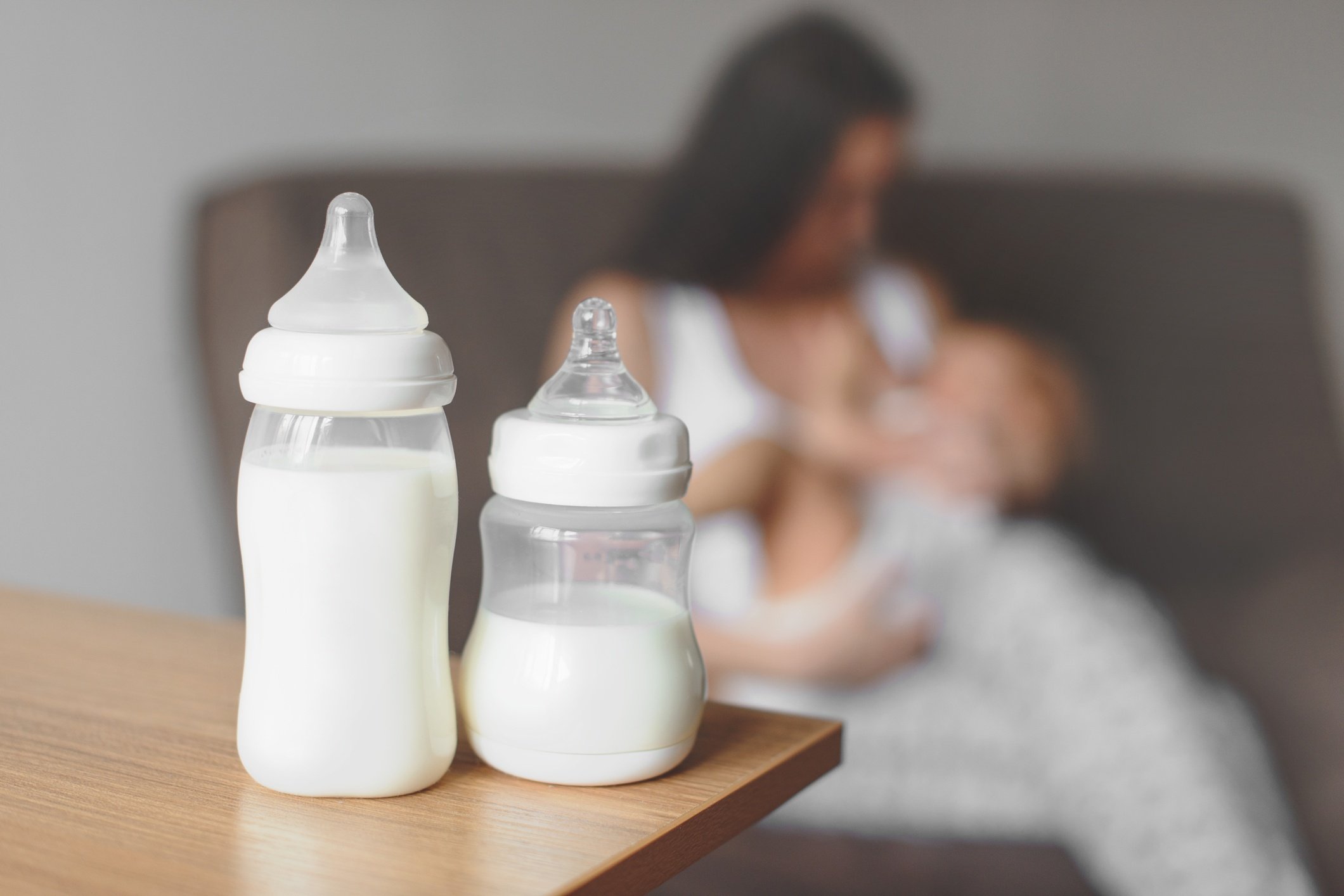Safe Storage of Expressed Breast Milk
Guidelines for Home
These are general guidelines for storing human milk at different temperatures. Various factors (milk volume, room temperature when milk is expressed, temperature fluctuations in the refrigerator and freezer and cleanliness of the environment) can affect how long human milk can be safely stored.

Human Milk Storage Guidelines
Before Expressing or Handling Breast Milk
- Wash your hands well with soap and water. If soap and water are not available, use an alcohol-based hand sanitizer that contains at least 60% alcohol.
- Mothers can express breast milk by hand or with a manual or electric pump.
- If using a pump, inspect the pump kit and tubing to make sure it is clean. Discard and replace moldy tubing immediately.
Storage Tips
- Use breast milk storage bags or clean food-grade containers with tight fitting lids made of glass or plastic to store expressed breast milk.
- Clearly label the breast milk with the date it was expressed.
- Do not store breast milk in the door of the refrigerator or freezer. This will help protect the breast milk from temperature changes from the door opening and closing.
- If you don’t think you will use freshly expressed breast milk within four days, freeze it right away. This will help to protect the quality of the breast milk.
- Freeze breast milk in small amounts of two to four ounces (or the amount that will be offered at one feeding) to avoid wasting breast milk that might not be finished.
- When freezing breast milk, leave about an inch of space at the top of the container because breast milk expands as it freezes.
- If you will be delivering breast milk to a childcare provider, clearly label the container with the child’s name and talk to your childcare provider about other requirements they might have for labeling and storing breast milk.
- Breast milk can be stored in an insulated cooler bag with frozen ice packs for up to 24 hours when you are traveling. Once you arrive at your destination, milk should be used right away, stored in the refrigerator, or frozen.
Safe Thawing of Breast Milk
- Always thaw the oldest breast milk first. Remember first in, first out. Over time, the quality of breast milk can decrease.
- There are several ways to thaw your breast milk:
- In the refrigerator overnight.
- Set in a container of warm or lukewarm water.
- Under lukewarm running water.
- Never thaw or heat breast milk in a microwave. Microwaving can destroy nutrients in breast milk and create hot spots, which can burn a baby’s mouth.
- Use breast milk within 24 hours of thawing in the refrigerator (this means from the time it is no longer frozen or completely thawed, not from the time when you took it out of the freezer).
- Once breast milk is brought to room temperature or warmed after storing in the refrigerator or freezer, it should be used within 2 hours.
- Never refreeze breast milk once it has been thawed.
Feeding Expressed Breast Milk
- Breast milk does not need to be warmed. It can be served room temperature or cold.
- If you decide to warm the breast milk, here are some tips:
- Keep the container sealed while warming.
- Warm breast milk by placing the container of breast milk into a separate container or pot of warm water for a few minutes or by running warm (not hot) tap water over the container for a few minutes.
- Do not heat breast milk directly on the stove or in the microwave.
- Test the temperature of the breast milk before feeding it to your baby by putting a few drops on your wrist. It should feel warm, not hot.
- Swirl the breast milk to mix the fat, which may have separated.
- If your baby did not finish the bottle, the leftover breast milk can still be used within 2 hours after the baby is finished feeding. After two hours, leftover breast milk should be discarded.
Safe Cleaning of Infant Feeding Items and Pumping Equipment
Carefully cleaning, sanitizing, and storing your pump equipment, baby’s bottles, and other feeding items will help to protect your breast milk from contamination. There are other resources available on the Internet, such as the CDC website, that can provide further guidance on how to safely clean and store pump equipment and infant feeding items.
Featured Image

Sign up for our newsletter
We're committed to your privacy. Chesapeake Regional uses the information you provide to contact you about content. You may unsubscribe from these communications at any time.